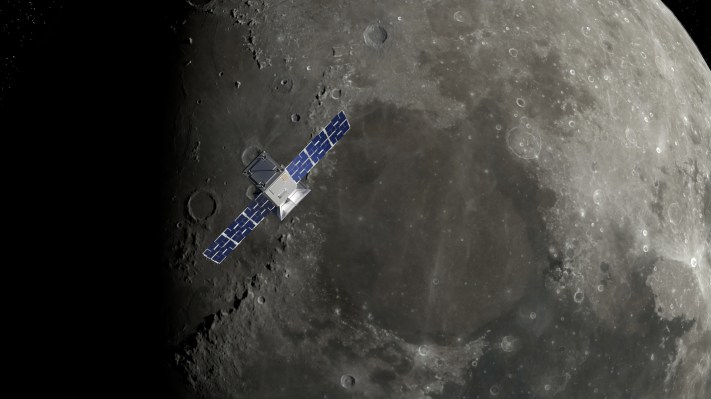NASA CAPSTONE appears 'happy and healthy' after miscommunication
NASA's CAPSTONE cubesat is 'happy and healthy' after restoring communications with Earth, ending a harrowing 24-hour period in which the spacecraft was disconnected from ground communications.< /p>
Advanced Space, the Colorado-based company that built, owns and operates CAPSTONE, Terran Orbital, which built the cubesat platform, and NASA each independently confirmed the reconnect on Wednesday.
CAPSTONE, or Cislunar Autonomous Positioning System Technology Operations and Navigation Experiment, is the first step in NASA's ambitious Artemis program, which aims to return humans to the moon by the middle of this decade. The microwave-sized cubesat is intended to trace an unusual orbit around the moon, called the Near-Rectilinear Halo Orbit (NRHO), which could eventually be used for a lunar space station.
This space station, which NASA calls "Gateway", could open up a wide range of possibilities for humanity's exploration of space. The Gateway could be used to drop off rovers or humans on the moon, act as a resupply depot, or even as a way station for longer crewed missions to Mars or beyond. But first, the agency wants to collect more data on NRHO - and that's where CAPSTONE comes in.
The loss of communication occurred just one day after CAPSTONE was deployed from Rocket Lab's Lunar Photon thruster. Rocket Lab provided launch services and payload delivery services for the mission. CAPSTONE operated normally for the first eleven hours after detaching from Photon, Advanced Space said in a statement. It successfully deployed its solar panels and communicated with a Deep Space Network (DSN) ground station in Madrid, Spain. DNS is an international series of massive radio antennas operated by NASA to support deep space missions.
The anomaly appears to have occurred during the second ground station pass with DSN, when CAPSTONE made partial contact with an antenna in California. As noted by SpaceNews, amateur satellite watchers first noticed CAPSTONE's lack of downlink, sparking a small wave of panic on Twitter. Due to the lack of communications, the first course correction maneuver - the first in a series of maneuvers to ensure the spacecraft stays on a precise course to the moon - has been delayed.
NASA noted in a July 5 mission update that CAPSTONE is still on track for ballistic lunar transfer to its target orbit, even with the delay in this first maneuver. "One of the benefits of the BLT, the designed trajectory, is its robustness to delays like this," Advanced Space said in a mission update.
It is not clear why the underlying communication issue occurred, or what steps were taken to correct it. "Additional updates will be provided," NASA said.

NASA's CAPSTONE cubesat is 'happy and healthy' after restoring communications with Earth, ending a harrowing 24-hour period in which the spacecraft was disconnected from ground communications.< /p>
Advanced Space, the Colorado-based company that built, owns and operates CAPSTONE, Terran Orbital, which built the cubesat platform, and NASA each independently confirmed the reconnect on Wednesday.
CAPSTONE, or Cislunar Autonomous Positioning System Technology Operations and Navigation Experiment, is the first step in NASA's ambitious Artemis program, which aims to return humans to the moon by the middle of this decade. The microwave-sized cubesat is intended to trace an unusual orbit around the moon, called the Near-Rectilinear Halo Orbit (NRHO), which could eventually be used for a lunar space station.
This space station, which NASA calls "Gateway", could open up a wide range of possibilities for humanity's exploration of space. The Gateway could be used to drop off rovers or humans on the moon, act as a resupply depot, or even as a way station for longer crewed missions to Mars or beyond. But first, the agency wants to collect more data on NRHO - and that's where CAPSTONE comes in.
The loss of communication occurred just one day after CAPSTONE was deployed from Rocket Lab's Lunar Photon thruster. Rocket Lab provided launch services and payload delivery services for the mission. CAPSTONE operated normally for the first eleven hours after detaching from Photon, Advanced Space said in a statement. It successfully deployed its solar panels and communicated with a Deep Space Network (DSN) ground station in Madrid, Spain. DNS is an international series of massive radio antennas operated by NASA to support deep space missions.
The anomaly appears to have occurred during the second ground station pass with DSN, when CAPSTONE made partial contact with an antenna in California. As noted by SpaceNews, amateur satellite watchers first noticed CAPSTONE's lack of downlink, sparking a small wave of panic on Twitter. Due to the lack of communications, the first course correction maneuver - the first in a series of maneuvers to ensure the spacecraft stays on a precise course to the moon - has been delayed.
NASA noted in a July 5 mission update that CAPSTONE is still on track for ballistic lunar transfer to its target orbit, even with the delay in this first maneuver. "One of the benefits of the BLT, the designed trajectory, is its robustness to delays like this," Advanced Space said in a mission update.
It is not clear why the underlying communication issue occurred, or what steps were taken to correct it. "Additional updates will be provided," NASA said.
What's Your Reaction?






















